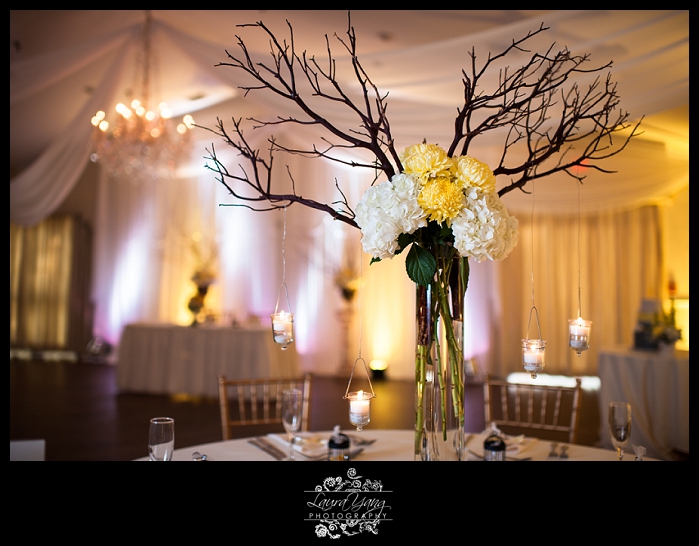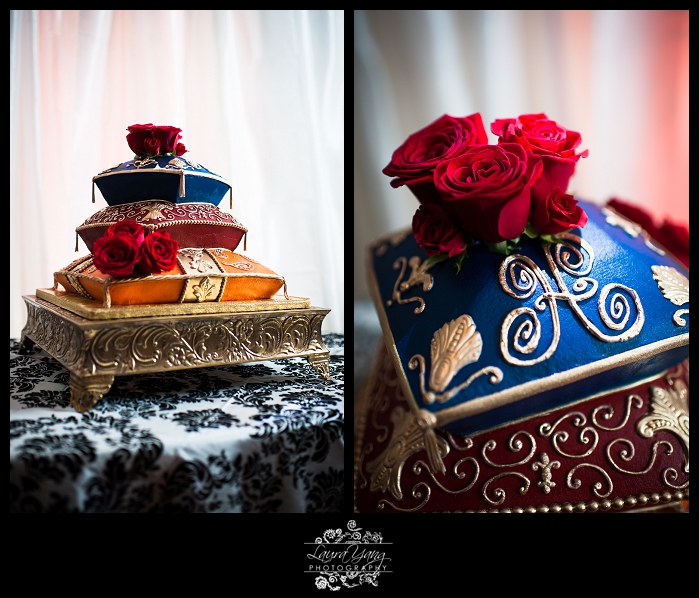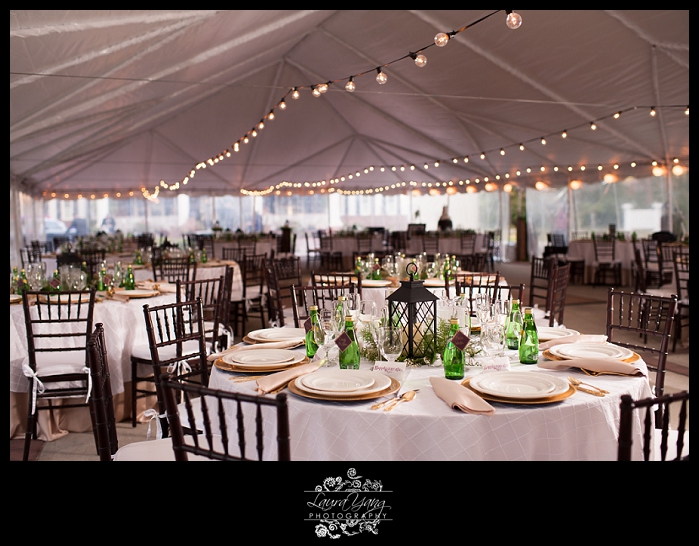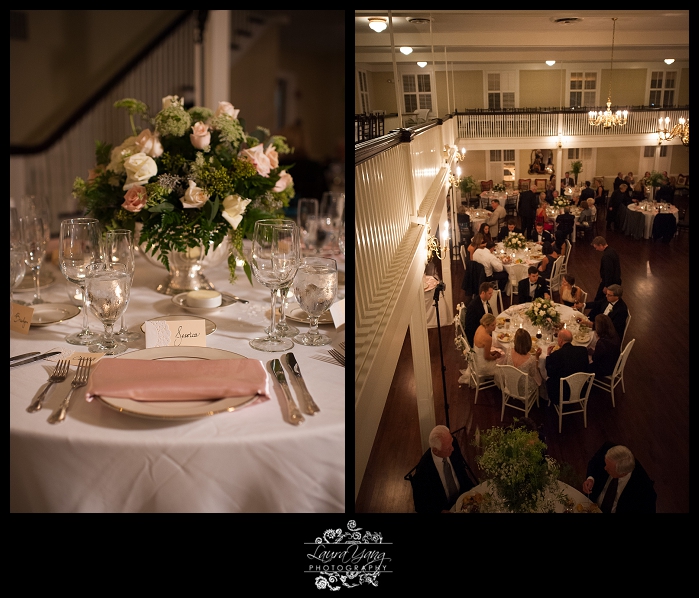Note: Photographers’ Friday is a weekly blog series directed toward professional photographers, and in some instances, serious amateur photographers. All Photographers’ Friday blog posts will assume that readers have a basic working knowledge of digital SLR cameras, but if you’re left with questions or don’t understand any of the information, don’t hesitate to ask. We love e-mails!
—
You know those pictures you see on wedding blogs, the ones of reception venues perfectly decorated and perfectly lit, and not a person in sight? The ones that the couple and the wedding planner and the florist and the blog editors all desperately want? Yes, you know those pictures. Because sometimes they can feel so elusive.
If anything ends up running behind schedule on the wedding day — the ceremony or caterer or florist, or if there’s bad traffic — it can effectively squash your chances of getting those coveted reception decor shots before the guests sweep into the room. But we’ve found a few ways to make sure we have the best opportunity to get the best shots we possibly can.
BEFORE THE WEDDING DAY:
- Make sure the couple understands that you can’t deliver pristine photographs of their reception decor if you don’t have sufficient time to shoot in the room before the guests are allowed in — and after the caterer and florist have completed the setup. If the couple can’t make this happen in the timeline of their wedding day, be sure to let them know that you will do your best, but you can’t guarantee their results will be up to par with the photographs they’ve seen in your portfolio from weddings at which you did have sufficient time to shoot without people inside the room.
- Call the venue or visit in person, and make sure the venue coordinator and day-of coordinator understand that you want to be able to capture the beautiful setup not only for the couple, but to share with the vendors as well. If they understand that giving you time to shoot benefits them rather than bothers them, they’ll be a lot more likely to help you.
- Get an idea — from the bride and groom or from the planner — of how the venue will be decorated and how the room will be laid out. Knowing what to anticipate in advance will help you go into shooting the reception setup with ideas already in your head — and an idea of what is most important to your couple.
- Have a basic plan of action for how to light the reception area — know whether, based on the venue conditions, you’ll be most likely to use off-camera flash, on-camera flash, or natural light. Set your timeline accordingly so you’ll have enough time to set up and test your lights.

ON THE WEDDING DAY:
- If at all possible, set up any light stands you need earlier in the wedding day so that all you have to do is power on your lights and adjust your settings when it’s time to shoot.
- Take a few moments to make sure you have your light settings adjusted properly. Once they’re set, you shouldn’t need to change them dramatically during the rest of the time you shoot the decor.
- Start with some wide, pulled-out shots that capture the scope of the entire room, from several angles if possible. This is something you must do early, before guests start slipping in or servers start placing salads.
- Don’t be afraid to ask other vendors to clear the room, or a certain part of the room. Yes, other vendors have a job to do, too. But chances are they’ll still be able to do their job just fine if they wait five minutes to let you get the full room shots. You will not be able to do your job if they don’t wait.
- Once you’ve photographed the entire room, narrow your focus to an entire table. If the tables have more than one type of centerpiece, be sure to capture each kind, or at least a good variety. Also, try to remove salt and pepper shakers, butter plates, and salad dressing from tables as you photograph them individually, if you can take the time. Chances are, packets of Splenda aren’t what your bride wants to remember about her fancy tablescape.
- If there will be candles lit on the tables but it’s too soon to light them all, ask the venue staff if they could light the candles on the table that will be the focus of your picture, then blow them out and light the candles on another table if need be.
- Once you’ve photographed the tables as a whole, focus on closeups of the details — place cards, table numbers, chair sashes, place settings, and so on.
- Move on from the guests tables to the sweetheart table, if there is one.
- Save the cake until after you’ve photographed the tables, because the cake will remain untouched a while longer; if need be, you can photograph the cake once the guests are seated (although I always try to get plenty of cake shots before they arrive).
 IF YOU CANNOT PHOTOGRAPH THE RECEPTION SETUP BEFORE GUESTS ARRIVE:
IF YOU CANNOT PHOTOGRAPH THE RECEPTION SETUP BEFORE GUESTS ARRIVE:
- Make sure the coordinator — or some of the bride’s or groom’s family who want to help out — keep at least one table untouched, and preferably a table near a wall so you don’t have to photograph it with a background of guests. That means the guests who are assigned to that table aren’t allowed to sit down, set purses or cell phones on the table, move the napkins, or dive into the favors. Then you’ll have at least one clean table to photograph as it was designed to look.
- As soon as you arrive, don’t start with the table you know is being kept clean for you. Instead, look around for other tables that are still untouched, but might not be untouched in just a few more minutes, and pay particular attention to the direction you’re shooting: Look for tables where you have empty room, rather than guests, for a background. Be sure to zoom in on any details that are unique to the other tables, too, even if you can’t photograph the entire table because guests have already taken a seat.
- Make the most of the guests who are already at the reception: Draft some to act as hand models to show off specialty drinks, hors d’oeuvres, and menu cards, etc. If you can’t be people-free, make the people look like they were a part of your plan!
- If the reception room is already full, or even partially full, wait to take your full-room shots until the guests are all seated for dinner. This won’t provide the clean, decor-centric look of a shot of an empty room, but it will be uniform and full of energy.
 Whew, that was a lot!
Whew, that was a lot!
This blog post doesn’t even begin to address reception lighting, but we’ve touched on that before and definitely will again in the near future (because the way we light receptions has evolved even more since last fall). In the meantime, I hope this was a help in figuring out a plan of action to tackle reception decor shots when you know you don’t have a lot of time! Questions or comments? Let us know below! Happy weekend, everybody.
~ Laura
Be the first to comment